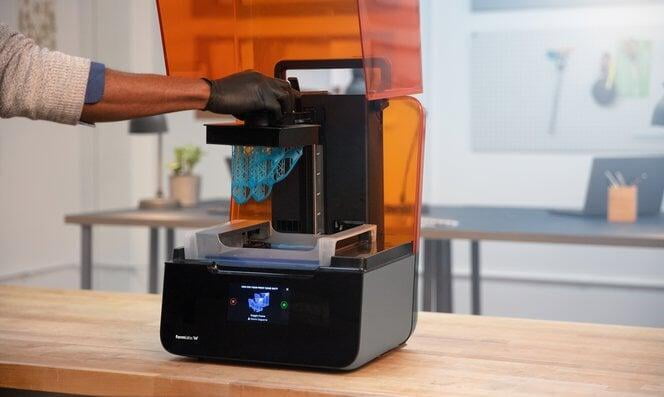DLP printing on the Figure-4 Standalone machine has its own distinct set of advantages and disadvantages that are sometimes mistaken with the resin-based SLA printing technology. We've included five essential DLP printing tips so you're aware of how to utilize this device for production or prototype.
The photo-sensitive polymer resin is quickly cured in all the chosen regions by a digital light projector while the surrounding resin is left uncured, covering the whole bottom of the construction plate. The build plate is carefully moved up one layer while the item is briefly raised, new resin pours in, and (e.g., 40 microns). Layer after layer, the operation is repeated.

Detail
Printing items in 10–50-micron layers at build rates of up to 100mm thickness per hour with Six Sigma repeatability is possible with the equipment shown in Figure 4. The extra-fine details and intricate surface textures of DLP are equivalent to those of injection-molded components.
Quick Turn Around
The Figure-4 printer's capacity to produce functioning prototypes and low-volume production goods the same day is a key advantage. With the use of our 3D Sprint software, we are able to design, print, and process components in only a few hours. You can find the sla 3d printer on this site
The machine's smaller build volume (125 x 70 x 196mm) and quicker build speed are to blame for the quick output. Conversely, methods like SLA and SLS have slower build rates and substantially larger build volumes to fill, which leads to longer lead times.
Molecular Range
From 3D Systems, we have access to an ever-expanding selection of DLP materials that address a variety of applications, such as functional prototyping, direct manufacturing of end-use components, mould fabrication, and investment casting.
Assistance Structures
Similar to SLA, the DLP procedure needs "support structures" to keep the components stable while they are being built in the resin tank. Breaking off the supports and manually sanding away any witness markings on the component are two steps in the cleanup procedure.
On the impacted surfaces, there will unavoidably be some obvious flaws. Choosing which face or features are more important for beauty or function, and then orienting the part inside the build appropriately, is a crucial component of DFAM (Design for Additive Manufacturing).
Casting
The Figure-4 machine's high level of precision makes it ideal for creating molds for unique 3D silicone or urethane items. Turnaround times may be shortened by heating molds made from heat-resistant Hi-Temp Amber 300 resin to fast cure silicone or urethane components.
On plastic components, we can produce over-moulded silicon pieces, doing away with the necessity for later assembly. A flexible silicon overlay applied after manufacture may provide a number of advantages, such as chemical resistance, waterproofing, shock absorption, improved grip, and grip.
